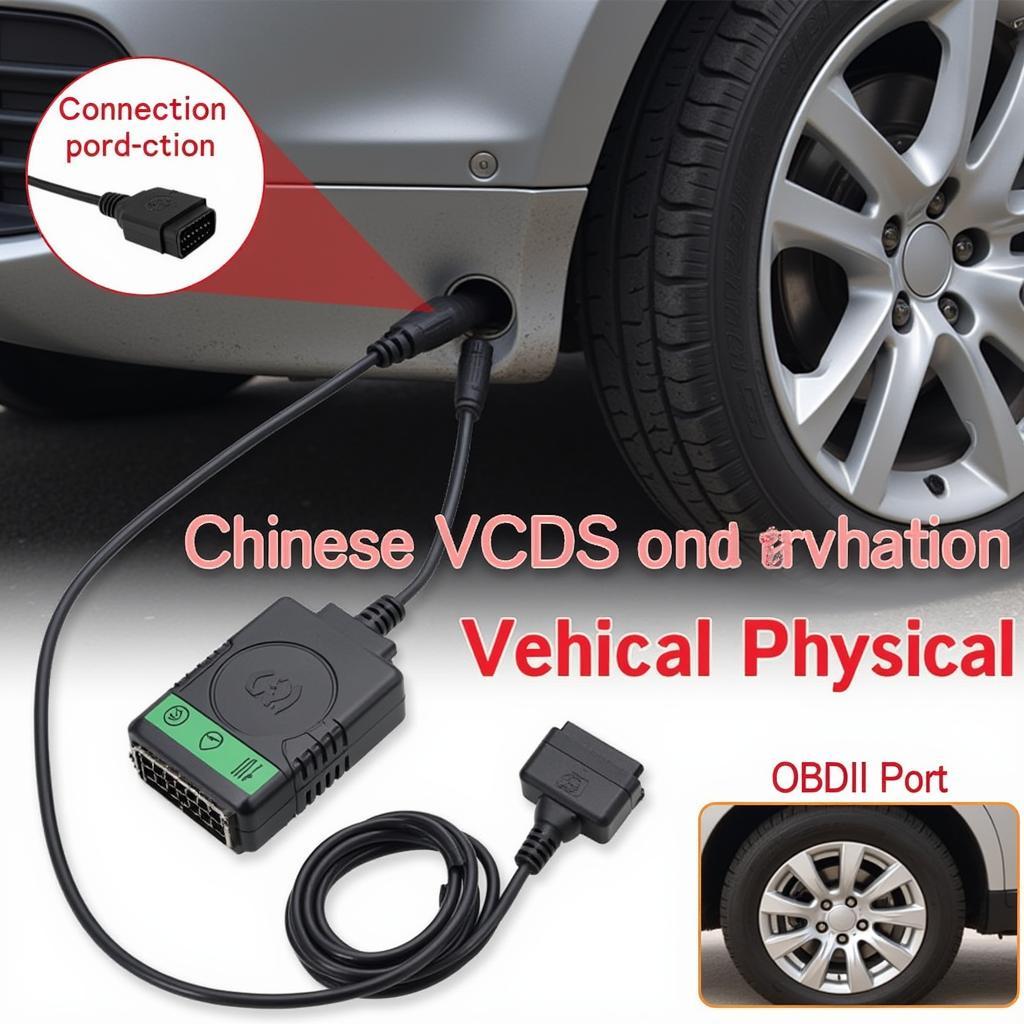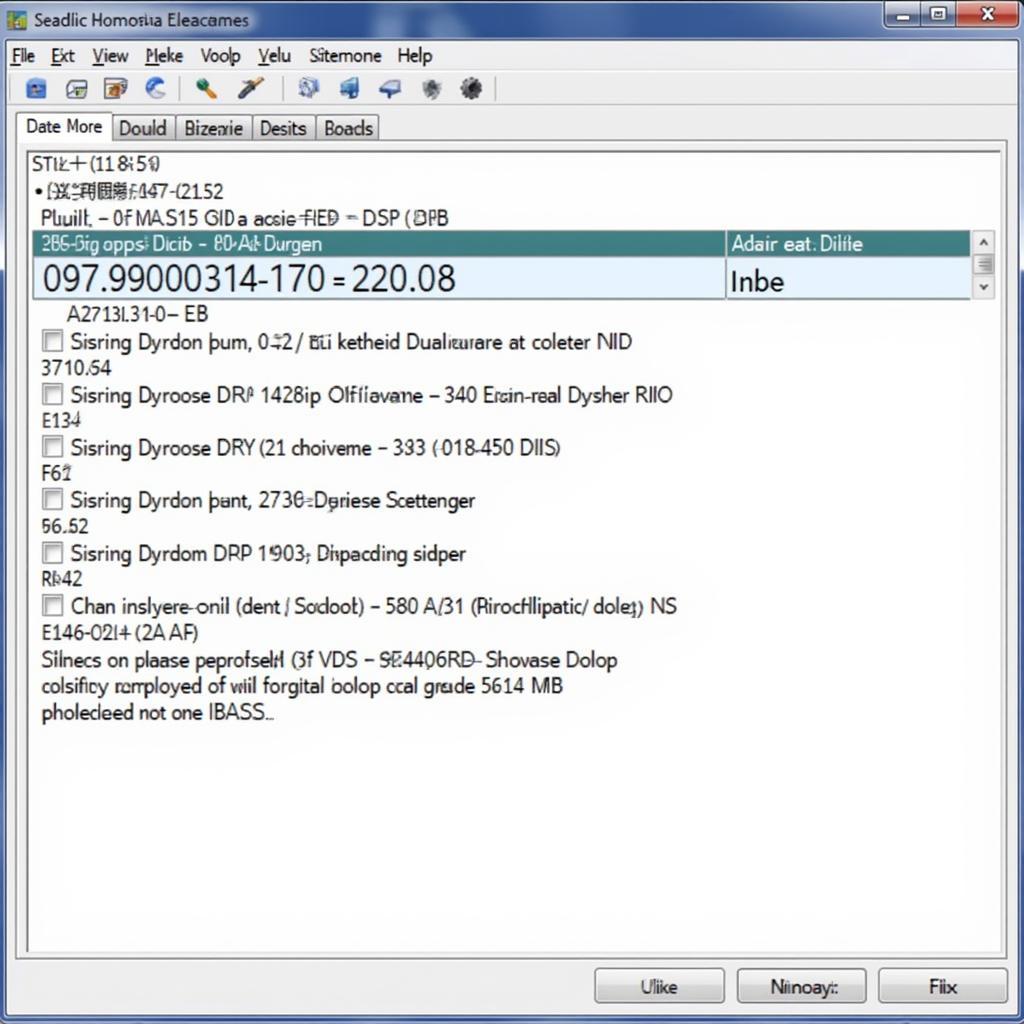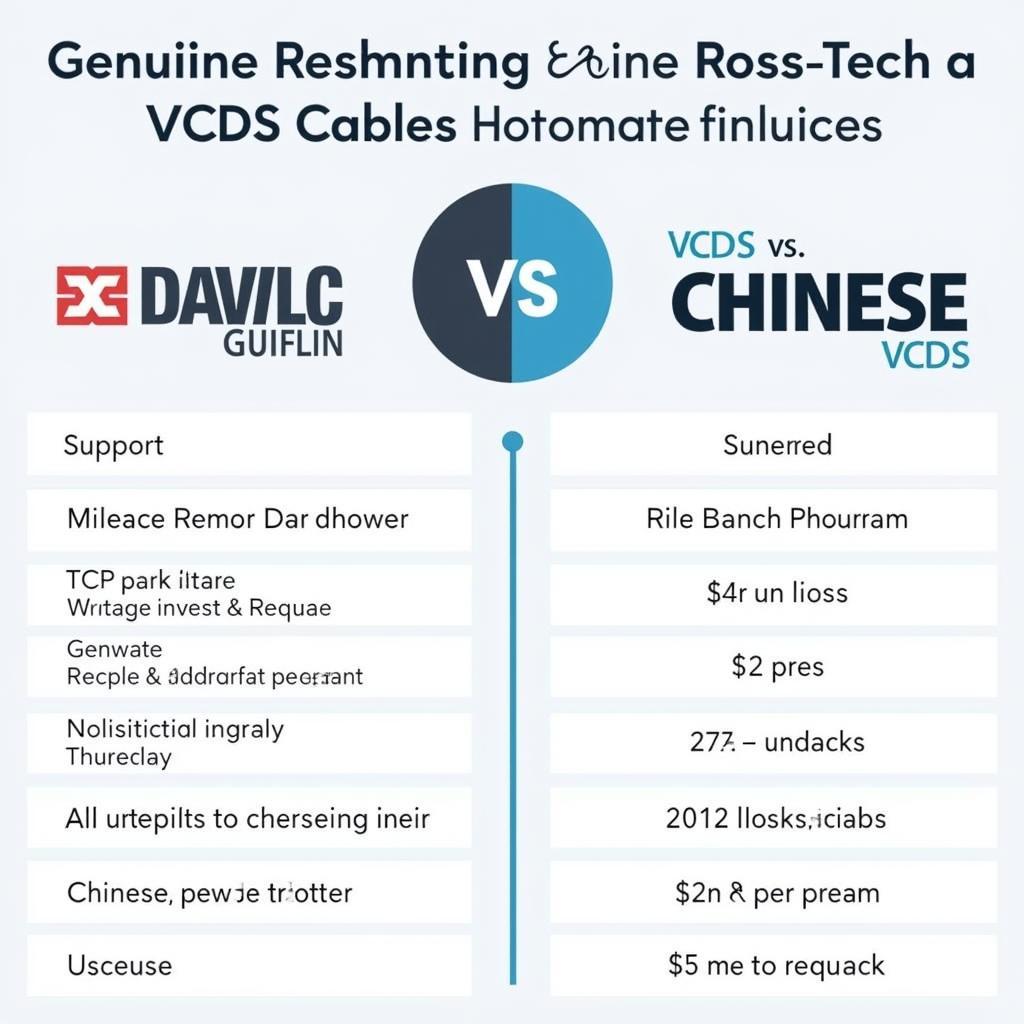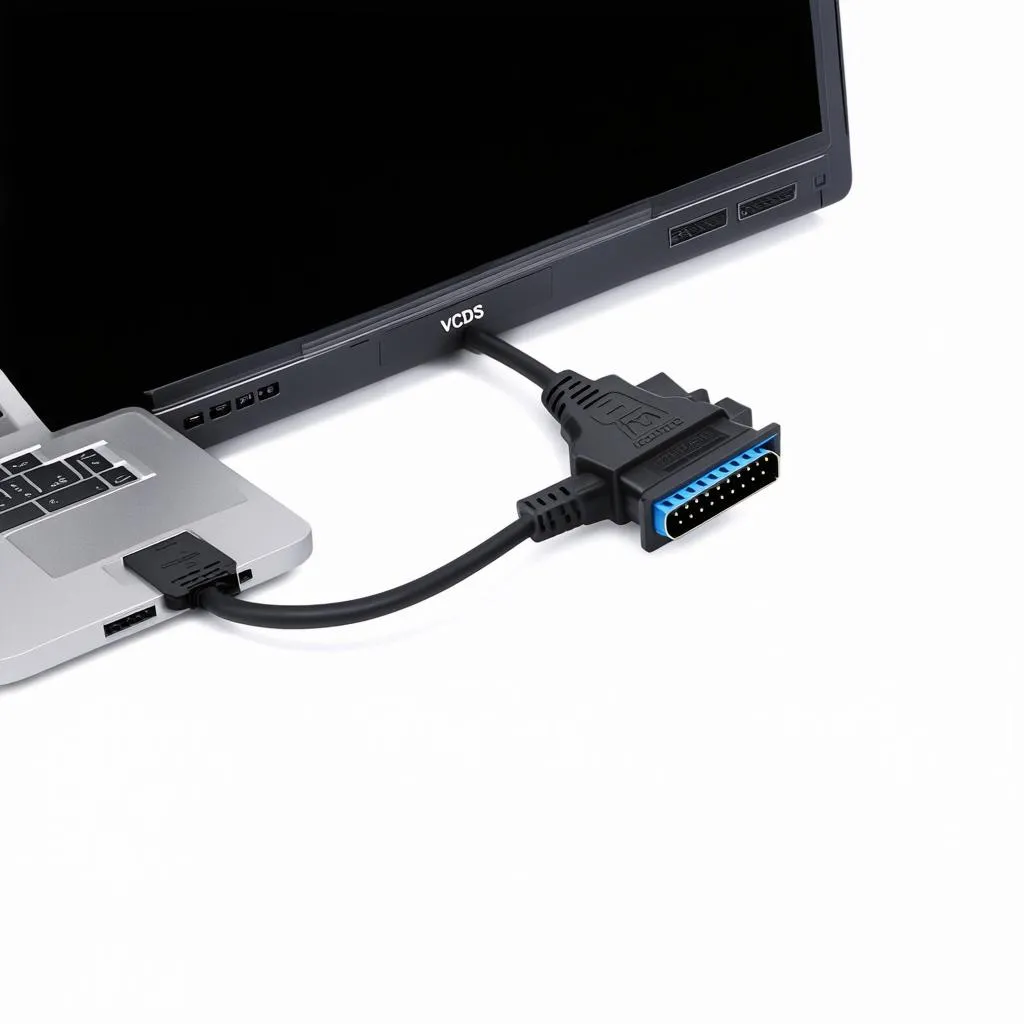Chinese VCDS cables have become a popular and affordable alternative for diagnosing, programming, and troubleshooting Volkswagen, Audi, Seat, and Skoda vehicles. These cables, often marketed as HEX-V2 or HEX-NET clones, offer similar functionality to the official Ross-Tech VCDS software but at a fraction of the cost. This guide dives deep into the world of Chinese VCDS, exploring its capabilities, limitations, and essential considerations for users.
What exactly is a Chinese VCDS cable and why has it gained traction in the automotive diagnostics market? Simply put, it’s a third-party hardware interface that attempts to replicate the functionality of the official Ross-Tech VCDS system. The allure lies in the price point, making it accessible to DIY enthusiasts and smaller workshops who may find the official VCDS cost prohibitive. However, this affordability often comes with certain trade-offs.
Exploring the Capabilities of Chinese VCDS
While Chinese VCDS cables can perform many of the same functions as genuine VCDS, including reading and clearing fault codes, accessing control modules, and performing basic adaptations, their capabilities are not always identical. Some common functionalities supported by many Chinese VCDS versions include:
- Diagnostics: Reading and clearing Diagnostic Trouble Codes (DTCs) across various vehicle systems.
- Coding: Modifying vehicle settings, such as activating or deactivating certain features.
- Adaptations: Adjusting control module parameters for optimal performance.
- Basic Settings: Performing basic system tests and calibrations.
However, it’s important to understand that not all Chinese VCDS cables are created equal. Functionality can vary significantly depending on the specific cable, software version, and the vehicle being diagnosed.
 Connecting Chinese VCDS Cable to Vehicle OBD-II Port
Connecting Chinese VCDS Cable to Vehicle OBD-II Port
Potential Risks and Limitations of Chinese VCDS
Using a Chinese VCDS cable carries inherent risks, primarily stemming from the unofficial nature of the software and hardware. These risks include:
- Software Instability: Unofficial software can be prone to bugs and instability, potentially leading to inaccurate readings or even communication errors with the vehicle’s control modules.
- Limited Functionality: Some advanced features available in genuine VCDS may not be supported by Chinese versions.
- Firmware Updates: Updating the firmware of Chinese cables can be risky and may permanently damage the device.
- Lack of Support: Users of Chinese VCDS typically lack access to official technical support or warranty coverage.
Understanding these limitations is crucial for making an informed decision. While cost-effective, using a Chinese VCDS cable requires careful consideration and acceptance of the potential risks.
 Chinese VCDS Software Interface Screenshot
Chinese VCDS Software Interface Screenshot
Choosing the Right Chinese VCDS Cable
With a plethora of Chinese VCDS cables available online, choosing the right one can be challenging. Look for cables advertised as compatible with your specific vehicle models and software versions. Researching user reviews and forum discussions can provide valuable insights into the reliability and functionality of different cables.
Key factors to consider include:
- Chipset: The quality of the chipset used in the cable directly impacts its performance and stability.
- Software Version: Ensure compatibility with your vehicle’s model year and control module versions.
- Vendor Reputation: Choose a reputable vendor with a track record of providing reliable products.
Is Chinese VCDS Right for You?
Deciding whether a Chinese VCDS cable is the right tool for your needs depends on your technical skills, risk tolerance, and intended usage. For experienced DIY enthusiasts comfortable with troubleshooting potential software issues, a Chinese VCDS can be a valuable tool. However, for professional workshops or those requiring reliable and fully supported diagnostic capabilities, investing in genuine VCDS is recommended.
 Genuine vs. Chinese VCDS Cable Comparison Chart
Genuine vs. Chinese VCDS Cable Comparison Chart
Conclusion: Weighing the Pros and Cons of Chinese VCDS
Chinese VCDS cables provide a budget-friendly entry point into the world of vehicle diagnostics. However, the potential risks associated with using unofficial software and hardware should not be overlooked. By carefully weighing the pros and cons and understanding the limitations, you can make an informed decision about whether a Chinese VCDS is the right choice for your needs. For comprehensive and reliable diagnostics, vcds hex v2 china offers a more robust solution. If you’re considering alternatives, exploring the vcp vs vcds comparison can provide valuable insights.
FAQ:
- What is the difference between Chinese VCDS and genuine VCDS?
- Can Chinese VCDS damage my car?
- Where can I buy a Chinese VCDS cable?
- How do I update the firmware on a Chinese VCDS cable?
- Is there any warranty or support for Chinese VCDS?
- What are the common problems encountered with Chinese VCDS?
- Can I use Chinese VCDS with all VAG vehicles?
Need further assistance? Contact us via WhatsApp: +1 (641) 206-8880, Email: CARDIAGTECH[email protected] or visit our workshop at 276 Reock St, City of Orange, NJ 07050, United States. Our customer support team is available 24/7. We also have other helpful resources on our website, including articles on specific diagnostic procedures and troubleshooting guides. You might also find our comparison of different diagnostic tools helpful in making the best choice for your needs.

